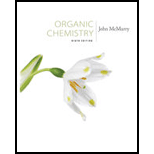
a) NH?OH
Interpretation:.
The likely formula of NH?OH is to be given.Concept introduction:
Atoms of elements combine among themselves or with those of other elements by gaining or losing or sharing one or more electrons in order to make the octet. In covalent compounds sharing of electrons takes place through which both the bonded atoms complete their octet in the valence shell. The number of atoms that combines with a central atom depends on the number of electrons present in its valence shell.
To determine:.
The likely formula for NH?OH.b) AlCl?
Interpretation:
The likely formula of the substance AlCl? is to be given.
Concept introduction:
Atoms of elements combine among themselves or with those of other elements by gaining or losing or sharing one or more electrons in order to make the octet. In covalent compounds sharing of electrons takes place through which both the bonded atoms complete their octet in the valence shell. The number of atoms that combines with a central atom depends on the number of electrons present in its valence shell.
To determine:
The likely formula for AlCl?
c) CF2Cl?
Interpretation:
The likely formula of the substance CF2Cl? is to be given.
Concept introduction:
Atoms of elements combine among themselves or with those of other elements by gaining or losing or sharing one or more electrons in order to make the octet. In covalent compounds sharing of electrons takes place through which both the bonded atoms complete their octet in the valence shell. The number of atoms that combines with a central atom depends on the number of electrons present in its valence shell.
To determine:
The likely formula for CF2Cl?
d) CH?O
Interpretation:
The likely formula of the substance CH?O is to be given.
Concept introduction:
Atoms of elements combine among themselves or with those of other elements by gaining or losing or sharing one or more electrons in order to make the octet. In covalent compounds sharing of electrons takes place through which both the bonded atoms complete their octet in the valence shell. The number of atoms that combines with a central atom depends on the number of electrons present in its valence shell.
To determine:
The likely formula for CH?O.
Trending nowThis is a popular solution!

Chapter 1 Solutions
Organic Chemistry - With Access (Custom)
- Consider the following nucleophilic substitution reaction. The compound listed above the arrow is the solvent for the reaction. If nothing is listed over the arrow, then the nucleophile is also the solvent for the reaction. Part 1 of 2 Br CH,CN + I¯ What is the correct mechanism for the reaction? Select the single best answer. @SN2 ○ SN 1 Part: 1/2 Part 2 of 2 Draw the products for the reaction. Include both the major organic product and the inorganic product. If more than one stereoisomer is possible, draw only one stereoisomer. Include stereochemistry where relevant. Click and drag to start drawing a structure. X હૈarrow_forward20.33 Think-Pair-Share (a) Rank the following dienes and dienophiles in order of increasing reactivity in the Diels-Alder reaction. (i) CO₂Et (ii) COEt || CO₂Et MeO MeO (b) Draw the product that results from the most reactive diene and most reactive dienophile shown in part (a). (c) Draw a depiction of the orbital overlap involved in the pericyclic reaction that oc- curs between the diene and dienophile in part (b). (d) Is the major product formed in part (b) the endo or exo configuration? Explain your reasoning.arrow_forward20.40 The following compound undergoes an intramolecular Diels-Alder reaction to give a tricyclic product. Propose a structural formula for the product. CN heat An intramolecular Diels-Alder adductarrow_forward
- What is the reaction mechanism for this?arrow_forwardWhat is the reaction mechanism for this?arrow_forwardCurved arrows are used to illustrate the flow of electrons. Using the provided starting and product structures, draw the curved electron-pushing arrows for the following reaction or mechanistic step(s). Be sure to account for all bond-breaking and bond-making steps. + Drawing Arrows CH3ONA, CH3OH heat : Br:O Na → H H Br Na + H H H H H :0: .H + Undo Reset Done Q CH3 Drag To Pan +arrow_forward
- What is the reaction mechanism for this?arrow_forward20.19 Predict the structure of the major 1,2-addition product formed by reaction of one mole of Cl₂ with 3-methylenecyclohexene. Also predict the structure of the 1,4-addition product formed under these conditions. 20.20 Which of the two molecules shown do you expect to be the major product formed by 1,2-addition of HCI to cyclopentadiene? Explain. Cyclopentadiene + HC 3-Chlorocyclopentene (racemic) or 4-Chlorocyclopentene (racemic)arrow_forward20.35 Propose structural formulas for compounds A and B and specify the configuration of compound B. EtO₂C 250°C C14H2004 CO₂Et 1. Oso, then NaHSO3 2. HIO4 C14H2006 A Barrow_forward
 Introduction to General, Organic and BiochemistryChemistryISBN:9781285869759Author:Frederick A. Bettelheim, William H. Brown, Mary K. Campbell, Shawn O. Farrell, Omar TorresPublisher:Cengage Learning
Introduction to General, Organic and BiochemistryChemistryISBN:9781285869759Author:Frederick A. Bettelheim, William H. Brown, Mary K. Campbell, Shawn O. Farrell, Omar TorresPublisher:Cengage Learning Chemistry: The Molecular ScienceChemistryISBN:9781285199047Author:John W. Moore, Conrad L. StanitskiPublisher:Cengage Learning
Chemistry: The Molecular ScienceChemistryISBN:9781285199047Author:John W. Moore, Conrad L. StanitskiPublisher:Cengage Learning Organic ChemistryChemistryISBN:9781305580350Author:William H. Brown, Brent L. Iverson, Eric Anslyn, Christopher S. FootePublisher:Cengage Learning
Organic ChemistryChemistryISBN:9781305580350Author:William H. Brown, Brent L. Iverson, Eric Anslyn, Christopher S. FootePublisher:Cengage Learning


